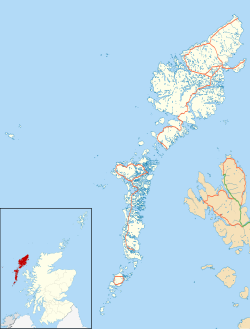Garynahine
| |
|---|---|
 The Callanish IV stone circle, just south of the settlement | |
Location within the Outer Hebrides | |
| Language | Scottish Gaelic English |
| OS grid reference | NB236317 |
| Civil parish | |
| Council area | |
| Lieutenancy area | |
| Country | Scotland |
| Sovereign state | United Kingdom |
| Post town | ISLE OF LEWIS |
| Postcode district | HS2 |
| Dialling code | 01851 |
| Police | Scotland |
| Fire | Scottish |
| Ambulance | Scottish |
| UK Parliament | |
| Scottish Parliament | |
Garynahine (Scottish Gaelic : Gearraidh na h-aibhne) is a settlement on Lewis, in the Outer Hebrides, Scotland. Garynahine is situated at a T-junction where roads from Stornoway, Uig and the west side of Lewis all meet. The roads are the A858 and the B8011. [1] [2] Garynahine is within the parish of Uig. [3]



